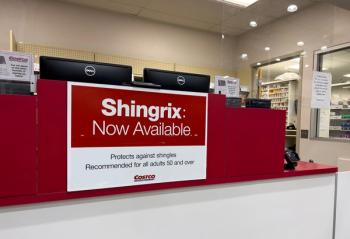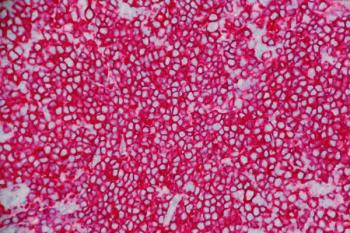
Pharmacy Practice in Focus: Health Systems
- September 2022
- Volume 11
- Issue 5
Build a Successful Biosimilar Adoption Plan
Many health care systems use these products to provide similar but cheaper clinical outcomes.
Biosimilars have become welcome market disruptors when it comes to chronic and life threatening diseases, as they provide additional treatment options and wider access to therapy for patients facing difficult conditions.
Because of their biologic nature and being created in a living cell system, biosimilars (like all biologics) generally exhibit high molecular complexity, and as a result, a small amount of natural variability is inherent in them. Despite this heterogeneity, all biological medicines, including biosimilars, must maintain a consistent clinical performance and quality to be approved by the FDA. The molecular similarity achieved by biosimilars by comparison with their reference drugs meets the appropriate standards for FDA approval and use as primary agents in treatment.
Given the ever-rising cost of care in the United States, it is important for health care providers to bend the cost curve and create financial stewardship of health care dollars. With these goals in mind, many health care systems are turning to biosimilars to provide clinical outcomes that are similar to those provided by reference products but at a reduced cost.
The biosimilar pipeline continues to grow based on demand and innovation in the marketplace, and health systems will need to turn to these therapies to reduce health care spending. Finally, managed care organizations are also starting to prefer biosimilar agents based on the accumulated experience with their use.
Understanding the situation
Based on the most recent reports available, biosimilar use is predicted to increase significantly over the next 5 years. Although there are some barriers to adoption based on concerns about potential immunogenicity issues, provider familiarity, and scope of clinical trials, it is our responsibility as pharmacy leaders to evaluate these products as appropriate for use.
It is also important to recognize that every health system or integrated delivery network will have unique barriers that may vary compared with peer institutions. For example, different barriers may be present from finance, information technology, patients, and providers. It is the responsibility of pharmacy leaders to evaluate these barriers and provide guidance for use, considering the financial benefits of these products.
In January, The American Journal of Managed Care® and the Center for Biosimilars® in partnership with Samsung Bioepis Co, Ltd, hosted an online open forum, “What’s the Hold Up? Overcoming Barriers to the Use of Biosimilars.” During this event, biosimilar experts compared the state of the US biosimilar industry with where it should be in the future.
Panelists agreed that if incentives were aligned and competition increased, there would be a smoother adoption process. Success cases were shared, and I had the opportunity to discuss insights into Emory Healthcare’s data-driven approach.
Winship Cancer Institute’s Plan
At the Winship Cancer Institute, we encountered some initial resistance to use when the first few biosimilars came on the market. To identify the best path forward, we performed finance and clinical reviews of the products and conducted a baseline survey.
The baseline survey allowed us to better understand all the barriers to use within our organization and to uncover who within our system might be the best physician champions. Through the survey results, it became clear that some barriers existed that we were already aware of, such as the information technology build and interchangeability, as well as other barriers we were less aware of, such as finance and patient education. Given the need to overcome all these hurdles, we took this opportunity to create a strategy around biosimilar use and formulate a plan.
One of our first actions was to create education around biosimilars specific to nurses, patients, pharmacists, and providers. By developing this education internally, we were able to include data-driven information and financial benefits specific to the institution. We also made sure to represent the data in a fair and balanced manner that spoke to the highly similar nature of the biosimilar medications as defined by the FDA. This education created a solid foundation of biosimilar understanding that we were able to build on as we took these agents to our pharmacy and therapeutics (P&T) committee.
Recognizing that biosimilars would be increasingly coming to the market, we knew it was important to create a universal approach that could reduce the time to P&T approval for all biosimilars. We created information that relates to efficacy and safety, financial stewardship, immunogenicity data, and product inter-changeability, allowing the P&T committee to make a uniform decision around these agents and to move forward with approvals.
We were also granted the ability to bring forward shortened monographs for new biosimilar products, giving the pharmacy the ability to select products that were in the best interest of our institution, patients, and payers. This P&T policy was key to forging a sustainable path forward that would allow us to adopt agents in real time for the benefit of patients. Under this P&T-approved policy, we also found it important to create efficient electronic medical record (EMR) frameworks that can be conducted in a timely manner and follow standard work protocols. Although initially we were concerned that building a new biosimilar and adding it within our order set and pathways would be difficult logistically, we were able to build out each medication in its generic name format so that plans involving multiple biosimilars for any given reference product could be adopted efficiently and safely.
This approach also upheld our financial standards and our National Drug Code accumulation, allowing us to demonstrate financial strength. The EMR build-out and the financial charging were key components of our operational success with biosimilar implementation.
One of the last but most important components of our biosimilar strategy involved creating patient education, both directly in the clinic by physicians and in the infusion center by our pharmacy team members. For simplicity’s sake, we decided to create a comprehensive, standard educational approach that would apply to both settings.
This approach led to patients understanding more fully why they were being transitioned to a biosimilar, how these medications would still support their treatment and outcomes, and how biosimilar use would reduce health care spending. Engaging patients early in this process is important, and we have found it to be essential to a high-functioning pharmacy department.
Conclusion
Biosimilar adoption will continue to increase rapidly based on the proven clinical benefits of these molecules, complemented by their reduced expense. Understanding a specific organization and its unique barriers allows the implementation of an adoption plan tailored to an institution, which will drive biosimilar adoption most effectively. In particular, establishing a P&T approved policy can provide an expedited process of biosimilar selection, and effective education about these agents can facilitate their acceptance by patients and providers. Health systems affected financially by the COVID-19 pandemic can leverage the reduced cost of biosimilars to generate savings while treating patients effectively. Recognizing the rise of biosimilars and the strong pipeline of such products should motivate health systems to create timely adoption strategies that allow them to stay relevant in the health care marketplace. Most importantly, the incentives to adopt biosimilars must change, so they can benefit health systems and payers and also so patients can benefit from cost savings. All stakeholders should be evaluated to realign incentives, with the patient at the center. ■
About the Author
Ryan Haumschild, PharmD, MS, MBA, is the director of pharmacy services at Emory Healthcare and Winship Cancer Institute in Atlanta, Georgia.
Articles in this issue
over 3 years ago
2022-2023 Influenza Season Looks to Be Severeover 3 years ago
HSSP Leads to High Rate of Acid Suppression Therapy Substitutionover 3 years ago
Pharmacy Leaders Can Establish Successful 503B Relationshipsover 3 years ago
Immune Thrombocytopenia Purpura Treatment Options Aboundover 3 years ago
Monkeypox Treatment: Unnecessary Complexity Can Lead to Inequityover 3 years ago
Pharmacists Must Help Fight the Opioid EpidemicNewsletter
Stay informed on drug updates, treatment guidelines, and pharmacy practice trends—subscribe to Pharmacy Times for weekly clinical insights.














































































































































































































